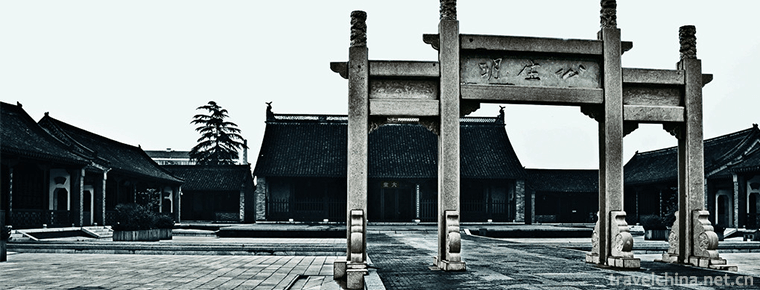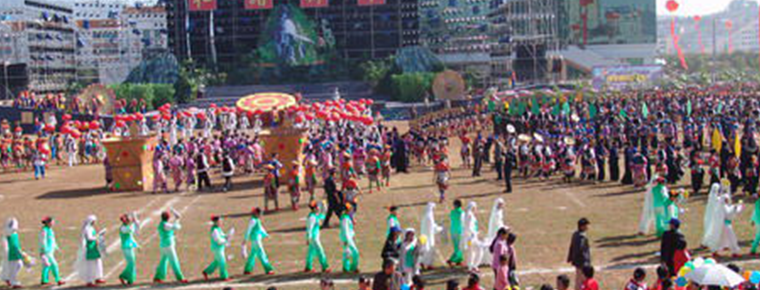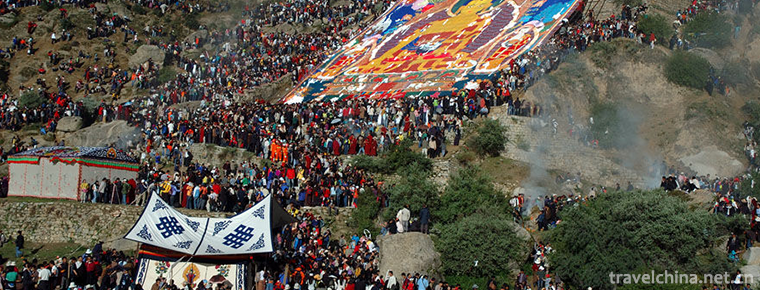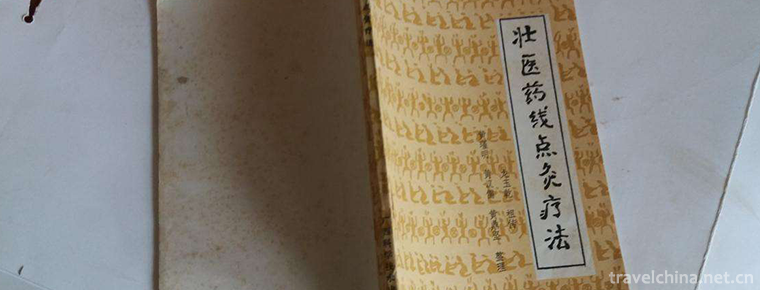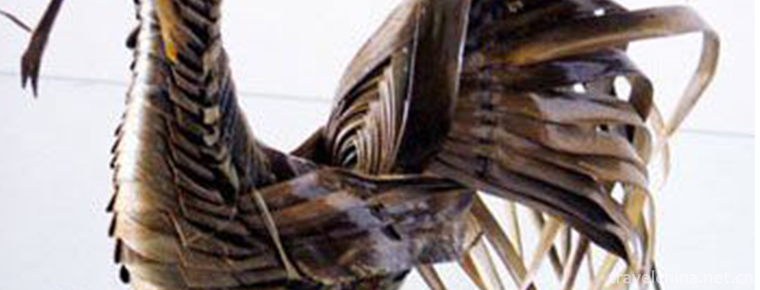Quyi
Quyi
Quyi is the general name of all kinds of "rap art" of the Chinese nation. It is a unique art form formed by the long-term development of folk oral literature and singing art. According to incomplete statistics, there are about 400 kinds of folk operas of different nationalities in China.
Basic Survey of Quyi
As a rap art, quyi has a long history, but it has no independent artistic status. In the history of the development of Chinese art, the rap art once belonged to the "Song Dynasty 100 Opera", performing in Washe and Goulan (both folk entertainment venues of Song Dynasty); in modern times, it belonged to "variety of juggling", mostly in Tianqiao in Beijing, Confucius Temple in Nanjing, Xujiahui in Shanghai. Tianjin's "Three Regrets" and Kaifeng's Guosi folk entertainment venues perform. After the founding of the People's Republic of China, it gave a unified and stable name to many mature rap arts, collectively known as "Quyi", and entered the theatre for performance.
Historical Development
Quyi has a long history of development. As early as in ancient times, storytelling and jokes among Chinese people, singing, dancing and comic performances by Haiyou (a folk art expert dedicated to performing at the court) in the court all contained the artistic factors of folk art.
By the Tang Dynasty, the emergence of popular stories about city people and Buddhist sutras to the public, the popularity of Daqu and folk tunes, made the art of speaking and singing Geisha flourish. Since then, the art of quyi, as an independent art form, began to take shape.
In the Song Dynasty, due to the development of commodity economy, the prosperity of the city and the growth of the citizen class, there were special places for rap and singing performances, as well as professional artists, talking skills, drum words, Zhugong tunes, singing and earning, and other singing forms were extremely prosperous, which were recorded in detail in Meng Hua Lu of Tokyo and Jisheng of the Capital by Nai Deweng.
During the Ming and Qing Dynasties and the early years of the Republic of China, along with the budding of capitalist economy, the number of cities increased dramatically, which greatly promoted the development of rap art. On the one hand, folk rap with strong local color flowed to cities one after another, and they became more and more mature in performing practice, such as Taoist sentiment, lotus flower fall, Fengyang flower drum, tyrant whip, etc. On the other hand, some old songs were circulating. Cheng Zhong, combined with the characteristics of different regions and dialects, has changed. For example, Yuan and Ming Ci dialects with rhymes have gradually evolved into Tanci in the South and drums in the north. During this period, new varieties of folk art and new repertoires emerged constantly, and many kinds of folk music were already famous in different schools. Most of the quyi varieties we see today are from the Qing Dynasty to the early Republic of China.
Essential characteristics
As a performing art, opera art uses "oral rap" to narrate stories, shape characters, express thoughts and feelings and reflect social life. Just as the essential feature of opera art is "singing and dancing stories", the essential feature of opera art should be "oral rap stories". This is the essential attribute of Quyi which is different from other art categories. Because the main artistic means is "oral rap", the art form of Quyi is relatively simple: performing by one or several people; or singing by one or several people, accompanied by small bands (often three or five instruments). Because it is spoken and sung, its performance is mainly based on the narration of the third person, and the folk uses the analogue endorsement of the first person. In this way, on the stage performance, it embodies the characteristics of "one person with many roles", "jumping out and jumping in", "one person with one big play". Thus, it is quite different from the "role-playing performance" of the performing arts such as opera, drama, film and television, that is, the so-called "appearance in speech" and "expression in reality".
artistic characteristics
As the integration of the most national and folk performing art forms in China, quyi has several main artistic characteristics: first, quyi performance is mainly expressed by "speaking" and "singing", so its language must be suitable for speaking or singing, must be lively, concise, concise and easy to understand. Secondly, instead of acting as fixed roles as dramas, opera performers dress up as different roles and perform various characters and stories to audiences through speaking and singing in the way of "one person and many roles". Therefore, the performance of Quyi is simpler and easier than that of drama. Thirdly, the simplicity and practicability of Quyi performances make it quick to reflect life. The contents of repertoires and bibliographies are mostly short and concise. Therefore, quyi performers are usually able to create and perform by themselves. Fourthly, the main means of artistic expression is speaking and singing, so it is the art of appealing to people's hearing. It stimulates the audience's hearing by speaking and singing to drive the audience's image thinking, and accomplishes artistic creation with the actors in the audience's thinking imagination. Fifthly, opera performers must have solid ability of speaking, singing, doing and superb imitation. Only with these skills can the performers vividly depict the characters and make the narrative of the events fascinating, so as to win the audience's appreciation. Above is the similarity of the artistic characteristics of the quyi varieties to different degrees, which is their commonness. At the same time, these kinds of music exist independently and have their own personality. Not only that, because performers of the same genre have their own strengths, but also form different artistic schools. Even the same genre has its own characteristics because of performers'differences, which forms a prosperous scene in which hundreds of flowers compete for beauty.
Manifestation
According to the survey and statistics, there are still about 400 folk folk art varieties in China, spread in the north and south of China's great rivers, inside and outside the Great Wall. Although these kinds of music have their own development process, they all have distinct folk, mass and common artistic characteristics. Its performance is as follows:
(1) Saying and singing are the main means of artistic expression. Say such as cross talk, book review, commentary; sing such drums as Beijing rhyme drum, single string signboard song, Yangzhou Qingqu, Northeast drum, Wenzhou drum, Jiaodong drum, Hubei drum and so on; like talking and singing (also known as rhyme recitation style) such as Shandong fastbook, clapper book, Gong and drum book, Pingxiang spring gong, Sichuan money board; and also talking and singing (both unaccompanied speaking and music accompaniment singing) such as Shandong Qinshu, Xuzhou Qinshu, Enshi Yangqin, Wuxiang Qinshu, Anhui Qinshu, Guizhou Qinshu, Yunnan Yangqin and so on; also talking, singing and dancing walking singing such as two-person duet, ten idle lotus falls, Ningbo walking book, Fengyang flower drum, car lamp, merchant flower drum, etc. It is precisely because quyi mainly narrates and expresses feelings by speaking, singing, or like talking and singing, so its language must be suitable for speaking or singing, must be lively, refined and easy to speak.
(2) Quyi is not performed by performers disguised as fixed roles as dramas, but by performers who do not disguise themselves as roles, performing various characters and various stories through speaking and singing in the way of "one person with many roles" (a performer can imitate many characters) and telling the audience. Therefore, the performance of Quyi is simpler and easier than that of drama. As long as there are one or two people, one or two accompanying instruments, or one person with a waking wood, a fan (used by the critics), a set of bamboo boards (used by the fastboard artists), or even nothing (such as cross talk artists), where to go, where to talk and communicate with the audience is more direct than drama.
(3) Quyi performance is simple and easy to perform, so that it can reflect life quickly. The content of the repertoire and bibliography is mostly short and concise, so the performers can usually compile, direct and perform by themselves. Compared with theatre performers, the director function of opera performers is particularly obvious. For example, a repertoire, a bibliography, or a cross talk passage, in the course of performance, the structure of the story plot, the arrangement of the scene, the transformation of the scene, the rendering of the atmosphere, the appearance of the characters, the psychological description of the characters, the arrangement of the language, the mastery of the tone, the speed of the rhythm and so on, all of them are based on the needs of narration or lyricism, and the best acceptance of the audience. Judgment, to make overall arrangements for speaking or singing, scheduling, and directing one by one to make the audience fascinated by the wonderful programs.
(4) Quyi takes speaking and singing as the main means of artistic expression, so it is the art of appealing to people's hearing. That is to say, quyi stimulates the audiences'image thinking by speaking and singing, and completes the artistic creation with the actors in the image formed by the audiences' image thinking. Quyi performances can be performed on the stage or can be classified as performances everywhere on the stage. Therefore, compared with theatrical audiences, the thinking of the audience is not restricted by the stage framework, and the content of what Quyi says and sings has greater freedom of time and space than that of theatre. In order to standardize the audience's imaginary thinking to the artistic world created by speaking and singing, the musician's response to the audience is more urgent and meticulous. Therefore, his relationship with the audience is closer than that of the dramatist.
(5) In order for the audience to enjoy the artistic beauty of hearing, seeing and seeing the audience, the performers must have solid artistic skills such as speaking, singing and doing, as well as superb imitation. Only when the opera performers have lively and moving skills, vividly depict the joys and sorrows of the characters, and fascinating narratives of events, can they win the audience's appreciation. And the solid foundation of the above is from the opera performers'observation, experience and accumulation of real life, as well as the analysis, research and understanding of historical life. This is particularly important for a performer.
These are the similarities of the artistic characteristics of more than 400 varieties of folk art in different degrees, which are their commonalities. More than 400 kinds of music exist independently and have their own personality. Not only that, the same kind of music because of the performers have their own strengths, but also form different art schools, even the same genre, but also because the performers have their own characteristics, which forms a prosperous scene of hundreds of flowers in the music world. Quyi is an art form.
Inheritance and Development
From October 1976, when the Gang of Four was crushed to the end of the twentieth century, it was a historical period in which China was truly prosperous and prosperous, and the art of folk art began to develop in an all-round way. Like the unprecedented great changes and great developments in the whole country's reform and opening up, quyi has experienced a comprehensive recovery and unprecedented prosperity in the past two decades, but at the same time it is facing various challenges.
During the ten-year catastrophe of the "Cultural Revolution" experienced by the whole country, the cause of Quyi was one of the worst-hit areas. Perhaps because of this, in the movement of smashing and criticizing the Gang of Four, which marked the end of the "Cultural Revolution", the art of Quyi burst out with a strong voice and rejuvenated the strength of youth. It can be said that the artistic recovery of Quyi after the "Cultural Revolution" was accompanied by the liquidation of the opposite "Left" line.
The art of cross talk with satirical tradition is particularly prominent at this historical juncture. Chang Baohua and Chang Guitian's Hat Factory, Hou Baolin and Fang Cheng's Unfinished Meeting, Ma Ji and Xijun's Stage Wind and Thunder, Jiang Kun and Li Wenhua's "Such Photography", Yang Zhenhua, Jin Bingyan and Chen Jiye's "Fake Big Sky" and other programs should express the people's hearts and voices at the historic opportunity to unveil and criticize the Gang of Four. The liquidation of the poisons flowing from the "Left" route played an important role and had a great impact. In particular, Jiang Kun and Li Wenhua co-produced the cross talk counterpart program "Such Photography", which is unique in conception and rich in connotation, revealing the historical tragedy of absurd years, and provoking thought-provoking. The rich ideological and artistic content of "Such Photography" enhances the effect of aesthetic creation, but also achieves the artistic reputation of Jiang Kun, who later became a famous cross talk artist, and establishes the artistic status of Jiang Kun's cross talk creation and performance.
Following the artistic revival of Quyi in this period, the Third Plenary Session of the Eleventh Central Committee of the Communist Party of China was held successfully, and the central work of the state was clearly shifted to economic construction, the recovery of Quyi art also turned to a more rational stage. In 1979, marked by the convening of the Third Plenary Session of the Eleventh Central Committee of the Communist Party of China, it was not only a year for the country to put things right in an all-round way, but also a year for the cause of Quyi to go on the right track after the "Cultural Revolution". Liu Lanfang (1944-) of Anshan Quyi Troupe, Liaoning Province, cooperated with her husband Wang Yinquan to re-edit Yuefei Biography, a traditional commentary by Liu Lanfang, which was recorded and broadcast by Anshan People's Broadcasting Station, and aroused great repercussions in Northeast China. Then, 66 radio stations throughout the country broadcast the commentary one after another. For a time, in many places, there appeared a grand occasion when the radio broadcasted "Yue Fei Zhuan" when the streets and alleys were sparsely populated. As a result, Yue Fei Zhuan became a typical example of the successful revival of traditional long books after the end of the "Cultural Revolution". After the Third Plenary Session of the Eleventh Central Committee of the Communist Party of China, the shift of the whole national central work to economic construction and the gradual implementation of the policy of reform and opening-up have further boomed the creation and performance of quyi, put the education and research of art on the right track, made the publication of books and periodicals unprecedentedly active, and expanded the exchange of art. The cause of Quyi has thus witnessed unprecedented new developments. In this context, the development of cross talk is particularly noticeable in the new era. In contrast to the big red and big purple of cross talk, the vast majority of the folk art varieties in the new period are relatively stable in their creation and performance, and they are developing steadily along their own laws. The resumption of traditional repertoire and bibliography is unprecedented. Some traditional programs which have been circulating for thousands of years have been almost performed in this period, even without analysis. Moreover, some of the excellent traditional long-length reviews and commentaries, such as Yangzhou's Commentary on the Marsh, Suzhou's Commentary on the Three Kingdoms, Suzhou's Tanci "The Story of the West Chamber" and "Rejuvenation Margin", the Commentary on "Xingtang Biography", "Yue Fei Biography", "Yang Jia Jiang", "Hujia Jiang" and "Ming Ying Jie", as well as the long Shandong Quick Book "Wusong Biography", have also been published and distributed for people to read. 。 The achievements of the new version are also outstanding. Qiu Xiaopeng and other writers of Suzhou Tanci "Jiulongkou" and Xia Yun's Yangzhou Commentary "Forging into Northern Jiangsu", "Truth and False" by Xu Lidan, Fan Naizhong's "Mountain Cat's Mouth Talk", He Youhuan's Hubei Commentary "Yangliuzhai", "Threat" by Cattle and Li Peishan, Ma Zhiming's "Dispute", and so on. The two-person duet "Harvest Bridge" and "Dumb Girl Married", major tune "Two Sisters Buying Hoes", Luan drum "Vinegar as Matchmaker" and "LiuErDog and Little Guangzhou", Henan Pendant "Soul Department of South China Sea", Hubei Xiaoqu "An Unforgettable Lesson" and so on, all have a high level. In terms of performances, in addition to the constant emergence of new talent, some old artists have also rejuvenated their artistic youth and created new brilliance for the opera stage. For example, Luo Yusheng, an artist performing Beijing rhyme drum, sang the theme song "Revitalizing the River and Mountain for the Future" in 1986 with Beijing rhyme drum music for the TV series "Four Generations in One Hall", which made him familiar with the art of Beijing rhyme drum with more audiences in the country, especially the younger generation. Thus, while making the audience further appreciate the unique charm of Beijing rhyme drum art, it also enlarges the influence of the whole opera art in the whole country.
In this period, great progress has been made in the study of Quyi. It is a distinct symbol of the study of historical theory in this period to vigorously explore the law of the creation and performance of Quyi itself so as to make its development no longer blind. The formal establishment of the Quyi Institute of the Chinese Academy of Arts in 1986 marked that the study of Quyi had entered a stage of formal development. Following the baptism of self-development and innovation in the past two decades of reform and opening up, the art of folk art is entering the 21st century with a pluralistic pattern and a brand-new outlook.
The Status of Quyi
As the most national and folk performing art in China, Quyi occupies a very important position in the whole history of Chinese literature and art development.
Firstly, quyi is a special carrier of Chinese national history and literature. In Chinese history, the epic poems of various ethnic minorities, as well as many folk songs and narrative poems, were disseminated, promoted and preserved through the "rap" of the art of quyi. Taking the final completion, stereotyping and preservation of the world-famous Three National epics of China, namely, the Tibetan epic "Biography of King Gesar", the Kirgiz epic "Manas" and the Mongolian epic "Jiangger", as an example, objectively, they are mainly inherited by collecting, sorting out, processing and performing "rap and singing" by the ethnic and folk "rap" artists. Its basic symbol is the inheritance system and mechanism of these epics. In fact, the survival and development of the epic "rap" type of quyiqu and quyiqu are embodied by their inheritance. As for the flesh-and-blood relationship between the narrative poems of the Han Dynasty and the "rap and singing" of quyi, it is a strong footnote to this phenomenon, needless to say.
Secondly, opera is the bridge and matrix of Chinese classical chapters and long stories and many kinds of operas. In other words, in its historical development, opera gave birth to Chinese classical novels and gave birth to many kinds of operas. The completion of Chinese classical long-chapter Hui-style novels such as The Romance of the Three Kingdoms, The Water Margin, Journey to the West and The Romance of Fengshen is the result of the direct nurturing of folk art. From north to south, China includes Jilin Jiju Opera, Beijing Opera, Shandong Luju Opera, Zhejiang Yueju Opera and other local operas, especially the formation of their vocal tunes, which are also directly derived from local opera types, such as Erren Duet, single string, Shandong Qinshu and Shengzhou Singing Book. Thus, Quyi became the "mother art" that nurtured other arts at the same time.
Finally, with its own existence, quyi not only provides literary themes for other arts, but also profoundly influences and cultivates Chinese artistic aesthetic taste and spiritual temperament.

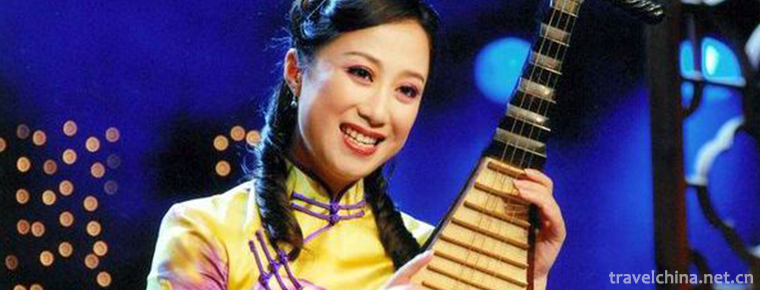
-
Huaian Government Office
Huai'an government office is located in Huai'an City, Jiangsu Province, which is a national AAAA tourist attraction. It is located in Dongmen Street, Huai'an District, the old city of Huai'an, north o.
Views: 91 Time 2019-01-17 -
Xinjiang Tianshan
Tianshan Mountain in Xinjiang, the eastern part of the Tianshan Mountains, is also the main part of the Tianshan Mountains and the world natural heritage. Tianshan Mountain is one of the seven major m.
Views: 181 Time 2019-02-25 -
The First Bay Scenic Area of the Yangtze River
The first bay of the Yangtze River (the first bend of the Yangtze River and the first bay of the Wanli Yangtze River): located between Shigu Town of Lijiang City in the northwest of Yunnan Province an.
Views: 149 Time 2019-03-17 -
Zhijin cave
Zhijin Cave, located in Guanzhai Miao Township, Zhijin County, Guizhou Province, is located on the South Bank of Liuchong River, one of the sources of Wujiang River, 120 kilometers away from Guiyang, .
Views: 138 Time 2019-03-18 -
Dai nationality Zhang ha
Dai Zhangha, also known as "Zanha", is a traditional form of Dai folk song, which is spread in Xishuangbanna Dai Autonomous Prefecture in the southern border of Yunnan Province and Dai villa.
Views: 115 Time 2019-04-24 -
Ha Ni Ha Ba
Ha Ni Ha Ba, an important part of Chinese Hani folk literature. Hani Haba, which means Hani ancient songs, is a popular and far-reaching folk song in Hani social life..
Views: 343 Time 2019-05-02 -
Forging Skill of Iron Painting in Wuhu
Iron painting originated in the Song Dynasty and prevailed in the Northern Song Dynasty. During the reign of Kangxi in the Qing Dynasty, iron paintings in Wuhu, Anhui Province, became self-contained a.
Views: 132 Time 2019-06-29 -
Sho Dun Festival
The Shirton Festival is a traditional religious festival of Tibetan people in Tibet, Qinghai, Gansu, Sichuan, Yunnan and other provinces and regions. It is mostly held in early February, mid-April or .
Views: 167 Time 2019-07-09 -
Zhuang medicine thread moxibustion therapy
Zhuang medicine is the traditional medicine of the Zhuang people. It is a national traditional medicine based on the ancient Luoyue culture and Lingnan culture, with Yin and Yang as its foundation, Qi.
Views: 166 Time 2019-08-16 -
New brown leaf weaving
Xinfang Brown edition is one of the traditional handicraft products in China. It has entered the third batch of national intangible cultural heritage list recommendation project list. It originated in.
Views: 472 Time 2019-08-16 -
Borneol Bridge
Luxian county is the "hometown of dragon culture" and "the hometown of Longqiao" in China. There are hundreds of ancient Longqiao bridges in the Ming and Qing Dynasties in Luxian County, which is the largest group of Longqiao in China and even in the world..
Views: 143 Time 2020-10-16 -
Wangcong Temple
Wangcong temple, located in the southwest of Pidu District, Chengdu City, Sichuan Province, is 23 kilometers away from Chengdu City. It was built in memory of Du Yu, the earliest king of Shu, and his successor Cong di..
Views: 137 Time 2020-11-05
